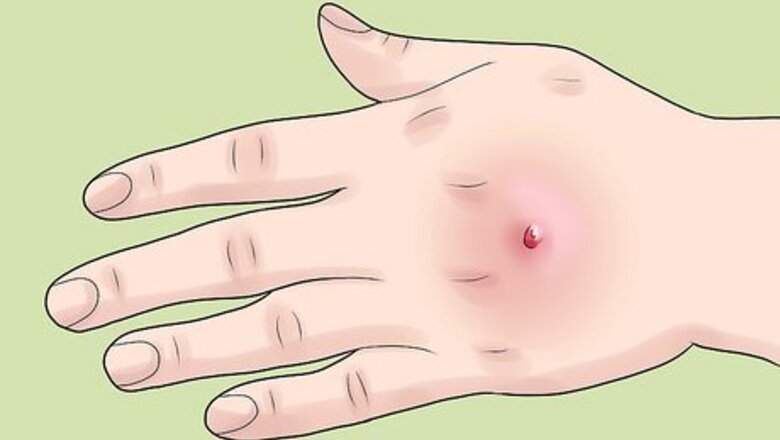
views
X
Research source
It usually lives on the skin without causing difficulties, but in some cases, it may develop into a serious infection. When MRSA is thought to be the cause of an infection, testing is necessary to confirm a diagnosis and start early intervention. Read on to learn more about how to test for MRSA.
Knowing When to Get Tested

Know when to suspect an MRSA infection. If you have a cut that isn't healing properly, MRSA may be the cause. Infections caused by MRSA don't necessarily look different from other types of infections. Here are the hallmarks of an MRSA infection: A red, raised sore that looks like a spider bite A swollen and pus-filled cut A fluid-filled blister with a honey-colored crust An area of red, firm skin that is warm or hot to the touch
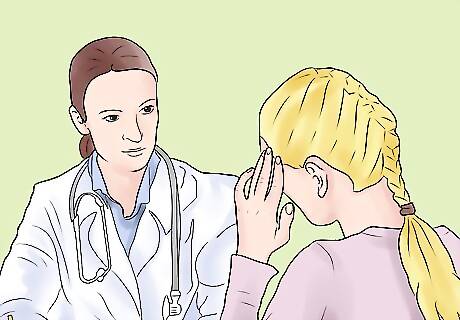
Get tested if you've had contact with someone has MRSA. Since MRSA is spread by skin contact, it's wise to get tested if you have been in contact with someone you know to have MRSA. You should also get tested if you live in an area that has a high prevalence of MRSA since it increases your chances of contracting it.
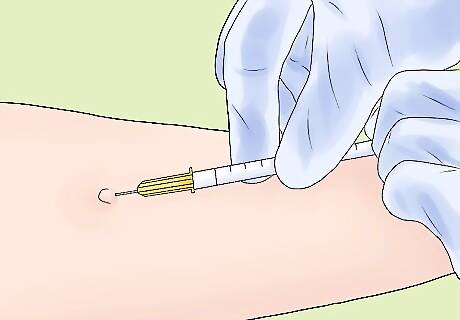
Get tested if your immune system is compromised. This will include elderly individuals, those who are infected with HIV, or someone with cancer. You should also get tested if you’ve recently been hospitalized or have used antibiotics.
Getting Tested
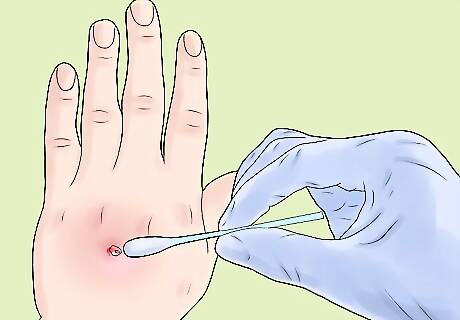
Have a culture done. A healthcare professional will swab the wound and take a culture test. This is taken to a lab for further investigation. The laboratory will place the culture test into a solution and examine it for MRSA. If the sample contains Gram-positive cocci clusters, MRSA is likely the culprit. The sample is also tested for Staphylococcus aureus. This is performed with a latex agglutination test. The sample is placed in a tube that holds rabbit plasma and free coagulase. If staph is present, a clump will form and further testing will be done to determine whether or not the bacterium is resistant to antibiotics. If MRSA is present, the specimen will continue to grow at the same rate despite the medicine. This process only takes one or two days.

Get the nasal passage tested. Another MRSA test involves swabbing the nostrils. A sterile swab is used to collect a sample that is placed in incubation and observed for the presence of MRSA. The lab process is similar to what is conducted with the swab from a wound. Within 48 hours, there will be an answer to the test.
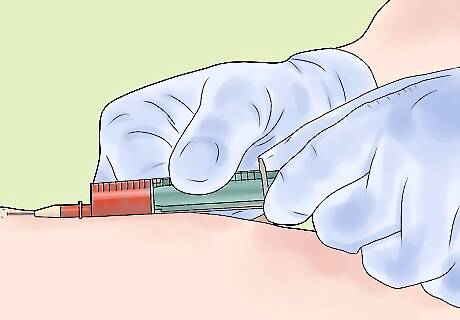
Have a blood test. The FDA has recently developed a new blood test for MRSA. Clinical tests were done and showed positive results. These tests managed to identify all positive specimens of the MRSA bacteria. They give faster results than with tests that involve swabbing. They are meant to be used on people who are likely to have a staph infection, but must be backed up with other tests.
Dealing With MRSA
Apply warm compresses to help promote drainage. If you have any abscesses, furuncles, or carbuncles from MRSA, then get a warm compress and hold it gently against the area. If the infection is less than 2 inches (5.1 cm) in circumference, compresses may be enough to treat it.
Have the infection drained by a medical provider. If home treatment doesn’t work, ask your doctor if they can do incision and drainage. Your doctor will make a small cut and let the liquid drain out from inside. If your infection is in a sensitive area, like your face or gential region, then your doctor may refer you to a specialist. You may not need antibiotics after getting an abscess drained.
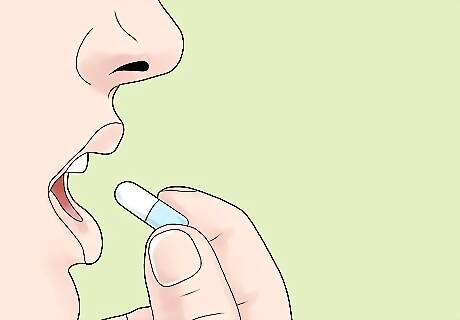
Take antibiotics you are prescribed. In addition to incision and drainage, your doctor may prescribe antibiotics to help fight your infection. Take the full course, even if your symptoms improve quickly. If your symptoms don't go away, call your doctor.
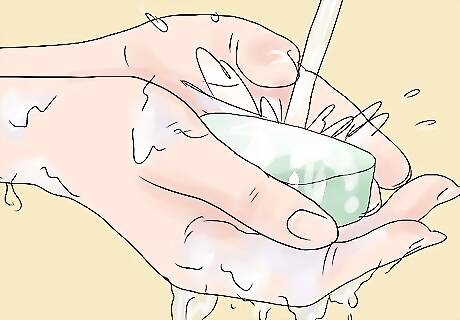
Avoid spreading it to others. If you have MRSA, you should avoid touching other people. Wash your hands often, especially before you eat or prepare food, before and after using the bathroom, and before and after changing your dressings. This will help prevent other people from getting MRSA. You may want to clean surfaces you routinely touch, like keyboards and electronics. MRSA can be spread through sneezing and coughing.


















Comments
0 comment